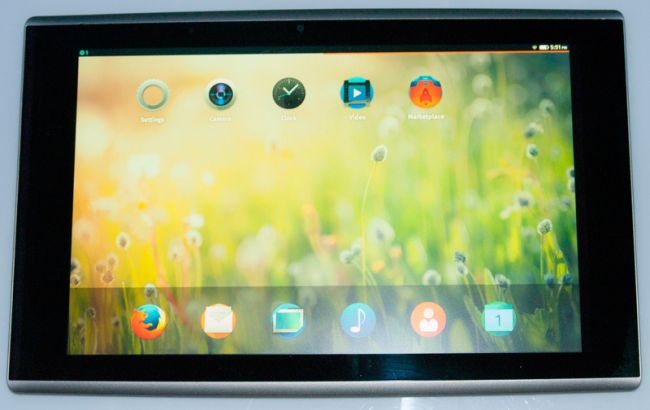So far the only products I’ve seen selling with Firefox OS are entry-level phone such as ZTE Open. Mozilla is now also working on Firefox OS for tablets, with the chosen tablet being InFocus New Tab F1, powered by AllWinner A31 quad core processor with 2GB RAM, and featuring a 10.1″ IPS capacitive multi-touch screen.

Here are the specs of the tablet:
- SoC – AllWinner A31 quad core ARM Cortex A7 processor @ 1.0GHz with PowerVR SGX544MP2 GPU
- System Memory – 2GB DDR3
- Storage – 16GB Flash + micro SD slot
- Display – 10.1″ IPS capacitive multi-touch screen @ 1280×800
- Camera – 2MP front camera, 5MP rear camera
- Connectivity – 802.11b/g/n Wi-Fi, Bluetooth and GPS,
- Sensors – Gyroscope
- USB – micro USB port
- Audio – Headphone jack, speakers
- Battery – 7000 mAh
- Dimensions – 266 x 170 x 9.7 mm
- Weight – 580 g
This mid-range tablet originally runs Android 4.2.2, but Mozilla has chosen it for its Firefox OS development program, and appears to have named the tablet “flatfish”.
The tablet is available from a couple of sellers in Aliexpress for just over $400, but is also available from Taobao for prices ranging from $250 to $280 equivalent.
Via Liliputing

Jean-Luc started CNX Software in 2010 as a part-time endeavor, before quitting his job as a software engineering manager, and starting to write daily news, and reviews full time later in 2011.
Support CNX Software! Donate via cryptocurrencies, become a Patron on Patreon, or purchase goods on Amazon or Aliexpress. We also use affiliate links in articles to earn commissions if you make a purchase after clicking on those links.




Emm … let me think about it …. pay that much for this one or pay much less for better ones that are running Android and for which many more apps are available …. This is a tough one 🙂
I’ve said it before and I’ll say it again, I think Firefox OS and Chrome OS are crap IMO. Javascript and other web technologies are way slower and more power hungry than even Dalvik, let alone native C++ apps. Also for now at least web apps don’t really match high end native apps in features and all that.
I’m totally with you there Marius.
The “web” as it stands today is a nice set of technology, very suited to forms and finite data layouts. Beyond that, it is extremely unsuitable to almost any other type of application, partially because the DOM by its very nature of being an event firing object hierarchy, each of which can trigger layout updates, partially because JavaScript is way too flexible and heavy to ever be performant. You can only optimize code that can dynamically re-wire itself so far.
The “asm.js” solution is yet another hack in a series of hacks to use JavaScript as it was never intended to be used, and is essentially an admission that hand-written JavaScript can never be performant. Essentially asm.js needs to be utilized as a compile target from a higher level language, and is best used in conjunction with tooling. That is, for JavaScript to even approach acceptable performance, it needs to be compiled using optimization hints, and the compile step is heavy.
JavaScript really has had its day. That’s not to say that the web will not endure. It will. I still use it every day for various lightweight tasks, but until JavaScript is replaced, and an application specific performant application stack is introduces that sits OUTSIDE the DOM, performance per watt for web based “applications” will be massively behind their native counterparts.
so we get a PowerVR SGX544MP2 driver ? or it uses android driver ?
@mj
Firefox OS, like most recent “linux” based mobile OS such as Ubuntu touch and Sailfish OS, just uses Android drivers.
@cnxsoft
I’m not 100% sure about this buy there’s a chance that Sailfish doesn’t use the regular Android drivers at least on the current Jolla phone. It might if Jolla decides to run Sailfish on Android phones.